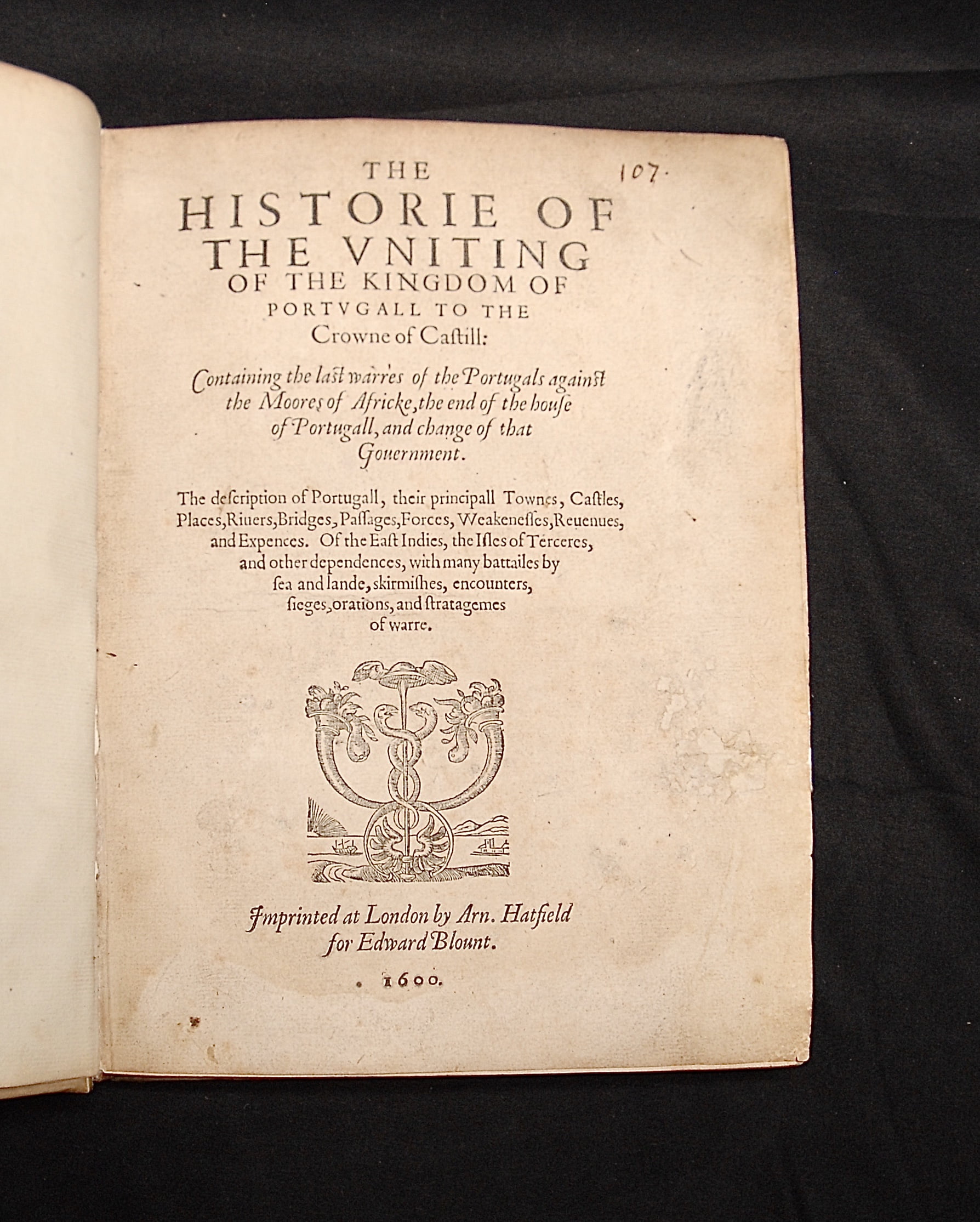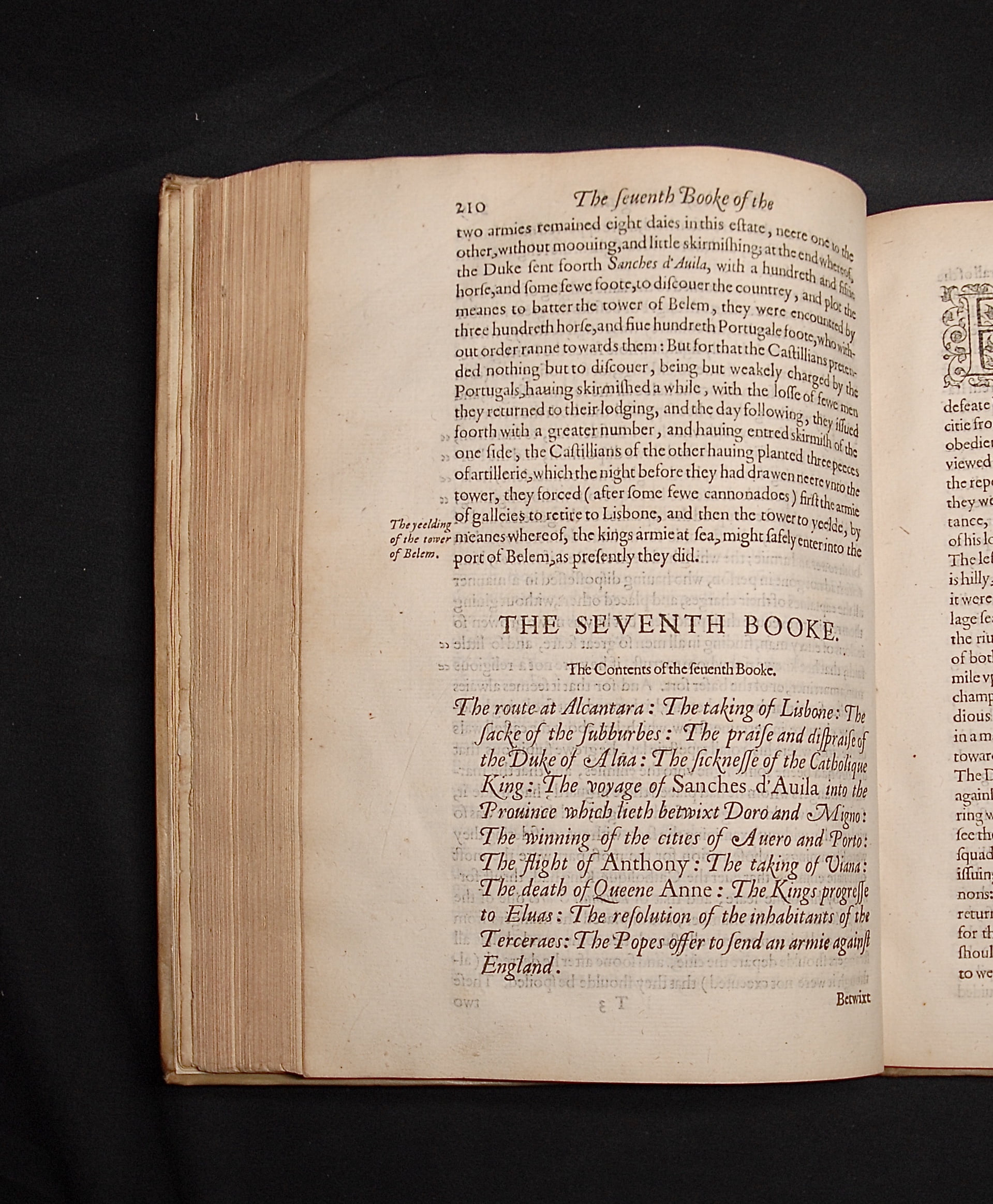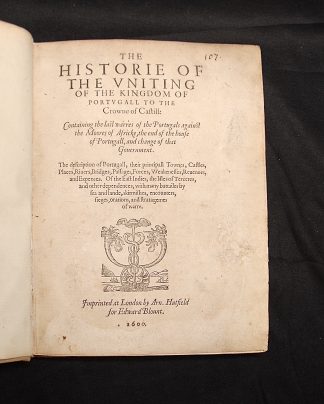CONESTAGGIO, Cerolamo Franchi di
THE TRANSLATOR’S FAMILY COPY?
The historie of the vniting of the kingdom of Portugall to the crowne of Castill.
London, Arn[old] Hatfield for Edward Blount, 1600£4,750.00
FIRST EDITION thus. pp. [xii], 324, [viii]: A-2E , 2F . Roman letter, some Italic. Woodcut printer’s device (McKerrow 293), floriated woodcut initials. Early manuscript autograph “Ex-libris Joannis Johnson, Coll Mag. Cant” on verso of last Engraved armorial bookplate of James Ibebetson on pastedown, Richard Radcliffe’s below, manuscript ex-dono from ‘Richard Duncan Radcliffe to Albert George Sandeman, 1879’ above, Patrick W Sandeman’s on fly, early armorial stamp of John Blount on verso of title, repeated over that of Ibebetson. Light age yellowing, t-p backed, dusty on recto, predominantly marginal light waterstaining in places, verso of last a little soiled. A very good copy, with good margins, in early vellum over boards, later label, covers bordered with double blind rule, a little soiled.
First edition of the English translation of this most interesting history generally attributed to Juan de Silva, conde de Portalegre; the work deals with the recent history of the kingdoms of Spain and Portugal prior to and during the union of their crowns. “A history and description of Portugal and the East Indies containing a royal genealogy starting in 1090, a geographical description, Portuguese exploration and an anecdotal account of the wars between Portugal and Spain. Translated by Edward Blount (?) who had it printed in folio by Arnold Hatfield in 1600. .. Scott suspects that the real author was Juan de Silva, fourth Count of Portalegre, who concealed himself behind the name of Girolamo Franchi de Conestaggio.. Dedicated to Henry Wriothesley, third Earl of Southhampton by Edward Blount. No later edition.” A Bibliographical Catalogue of Italian Books Printed in England 1558–1603. Of particular interest is its treatment of the voyages of discovery and of Portuguese colonial expansion, especially in Africa (in battles against the Moors), Asia and the Southern Americas, its description of the states of the Colonies (e.g. Brazil apparently was only a penal colony while the Moluccas were prized for their cloves and nutmeg), and the role of the Jesuits in state affairs. Contemporary events in Europe are not ignored. The House of Hapsburg and the Prince of Orange figure fairly frequently and even the story of the request of aid from the people of Ireland to the Pope, against Queen Elizabeth I is recorded. The work begins with the genealogy of the Kings of Portugal from 1090 to 1527. The translation is almost certainly by Edward Blount (1565-1632), though it was also attributed to Marlowe, publisher and translator into English of a number of popular Spanish and Italian works of the day, including the first English edition of Cervantes. Interestingly the work has a double Shakespeare connection. It is dedicated by Blount to Henry Wriothesley, Earl of Southampton, Shakespeare’s close friend and patron and Blount, of course, with Jaggard, was the publisher of Shakespeare’s great first folio.
The early autograph could well be that of John Johnson of Cranbrook (1662–1725) the theologian who published several theological works in the Laudian tradition.
STC 5624. Lowndes II, 508. Alden 600/31. Brunet II, 217 (referring to the original Italian edition); ‘ouvrage curieux, qui a eu beaucoup de succès dans le temps: il est Jean de Silvá, comte de Portalegre, qui accompagna Don Sébastien en Afrique en qualité d’ambassadeur d’Espagne’. JFB has 1589 Italian version only.In stock






